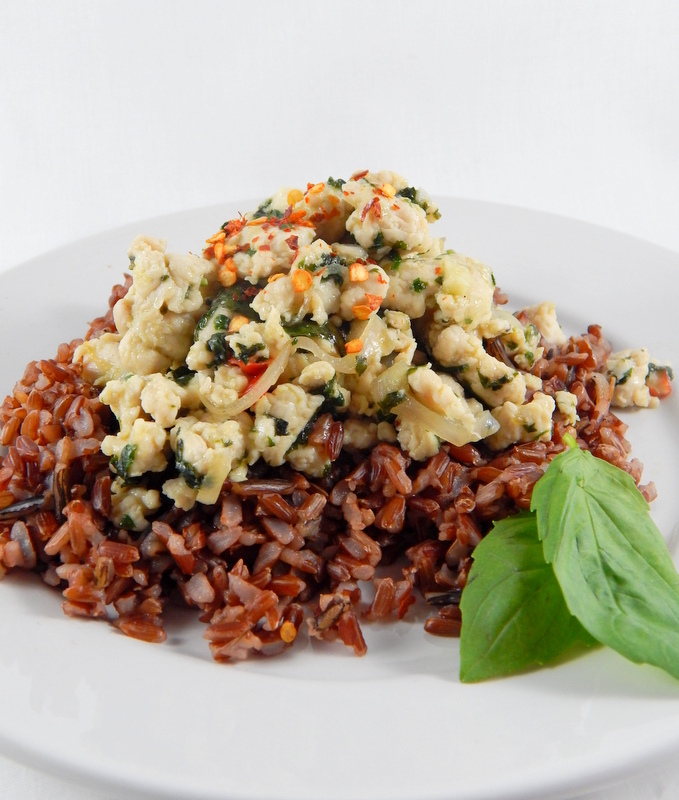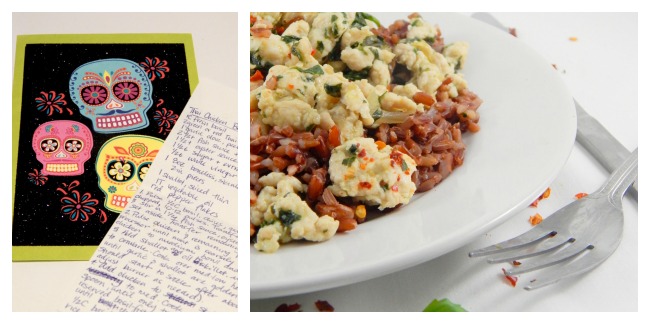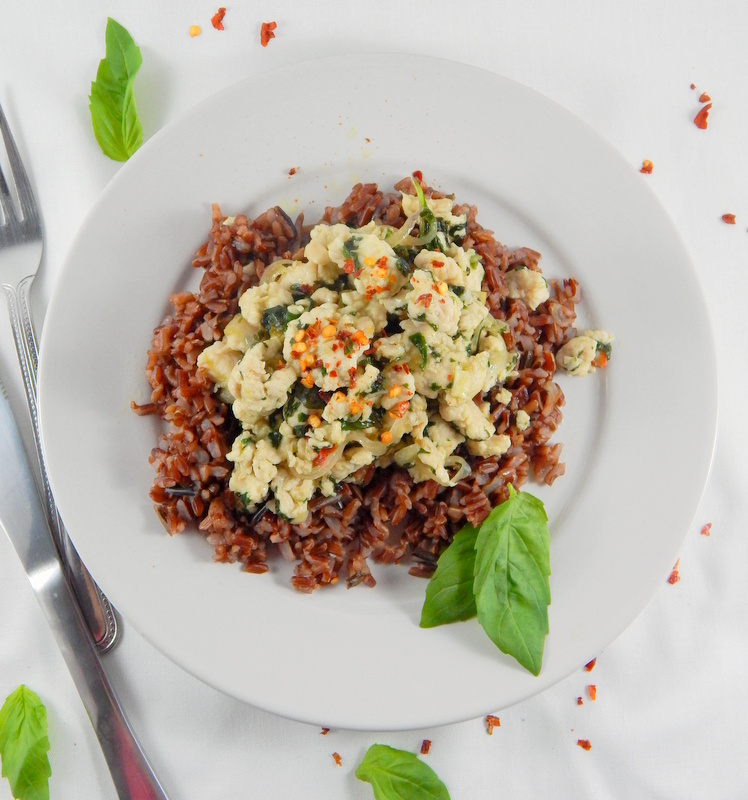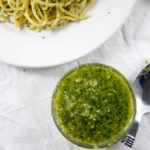 Recently I decided to do some spring cleaning around our flat. I organized the piles of miscellaneous stuff in our closets, I pulled out clothes for donation, and I filed the mountain of important papers stuffed in the desk drawer. During all that cleaning I found a Halloween card my friend Kim sent me and inside was this recipe for Basil Thai Chicken. I can’t believe I had forgotten about it! I read over the recipe and it looked good, was a little bit different, but not too hard so I decided to try it out.
Recently I decided to do some spring cleaning around our flat. I organized the piles of miscellaneous stuff in our closets, I pulled out clothes for donation, and I filed the mountain of important papers stuffed in the desk drawer. During all that cleaning I found a Halloween card my friend Kim sent me and inside was this recipe for Basil Thai Chicken. I can’t believe I had forgotten about it! I read over the recipe and it looked good, was a little bit different, but not too hard so I decided to try it out.
Kim is actually someone I credit with helping me learn to cook. Five years ago when I moved to New York I was sad to leave my friends, but one of the ways we kept in touch was through a food blog that Kim ran. You can check it out here. Five of us were contributors and in the about section it says “we can’t cook, but we are gonna damn well try.” All of us had talked about wanting to cook and learn more, and the blog was a way for us to do it together. Kim would choose a theme and we’d all cook to the theme, share some stories, the recipe, and photos. It pushed us to try new things in the kitchen, help each other learn, and for me stay involved with them even though I was states away. When that blog stopped, it pushed me to start Cooking is Messy. 
I like that good food can be a way to connect with people. This recipe in particular is really nice, but the first time I made it Ryan said, “smells good, tastes good, doesn’t look good.” I asked him why and it was because I made it with white rice. It was white chicken, on white rice, on a white place. He was right, it looked bland and not very inviting. Which brings me to something I’ve thought about a lot – what’s more important taste or appearance? I always want to say taste because if food doesn’t taste good then what is the point? However, if it looks bad you won’t even want to eat it so you won’t want to taste it. For example, one of the best things I’ve ever tasted is Jacques Pepin’s French onion soup but the photos I took of it are hideous. How will people know it’s amazing if it looks bad? What do you think – taste or appearance? Feel free to weigh in in the comments.
So to improve, the next time I made this I used red camargue and wild rice, which I had never tried before. The rice is chewier and nuttier than regular white rice. It also of course adds nice color and helps the green basil pop.
Overall this recipe is pretty easy to make, which just a few elements that might be unfamiliar. First, it includes oyster and fish sauces, which are ingredients I’ve never used before. However, if you like cooking Asian dishes it’s probably a worthwhile investment and they aren’t so expensive to buy. Also I really liked the flavors. Something I did final unusual is that this recipe asks you to blitz the chicken in a food processor. This is nice because it decreases cooking time, but it’s just not something I thought about doing before. If you could find ground chicken then you could probably skip this step. What’s best about this recipe is that the final dish ends up with all the flavors – sweet, bitter, spicy, umami. It’s really lovely and complex. Basically, the flavors are doing a ton but it doesn’t require a lot of work from you to get all that deliciousness.
 Messy level: So much of the prep is done in the food processor that this makes the cooking part really easy and mess free. However, I hate cleaning all the parts of the food processor and since you’re pulsing raw chicken, you really are going to have to do some serious scrubbing in the end.
Messy level: So much of the prep is done in the food processor that this makes the cooking part really easy and mess free. However, I hate cleaning all the parts of the food processor and since you’re pulsing raw chicken, you really are going to have to do some serious scrubbing in the end.
- 1 cup of rice (whatever kind you prefer)
- 2-3 cups water
- 1 cup fresh basil, divided
- 2 green or red Thai chiles, or 2 serrano chiles, or 1 jalapeno; stemmed and seeds removed
- 1 garlic clove, peeled
- 1 tablespoon fish sauce
- 1½ teaspoon oyster sauce
- 1½ teaspoon sugar
- ½ teaspoon white vinegar
- 8oz boneless skinless chicken breasts, cut into 2 inches chunks
- 1 shallot, thinly sliced
- 1 tablespoon vegetable oil
- red pepper flakes
- Read package instructions for rice and follow those guidelines. White rice usually needs twice as much water as rice. Red rice needs about three times as much water as rice. So, in a medium saucepan add rice and water. Bring to a boil, then lower the heat, cover and let simmer for 30-40 minutes or until the water is absorbed.
- In a food processor, pulse ½ cup basil with chiles and garlic. Pulse until finely chopped, about 10-12 pulses.
- Transfer 1½ teaspoons of the basil mix into a small bowl. Scrape the rest of the basil into a large skillet. Set the skillet aside. (Don't put the food processor in the sink, you'll need it again!)
- Return to the small bowl with the 1½ teaspoons of basil mixture. Add the fish sauce, oyster sauce, sugar, and vinegar. Mix until well combined. Set the sauce aside.
- Add the chicken pieces to the food processor. Pulse until meat is chopped into small pieces, about 6-10 pulses.
- Take the food processor bowl with the chicken in it and put it in the fridge for 15 minutes.
- Meanwhile, add the shallot and oil to the skillet with the basil mixture. Stir until everything is well mixed. Turn the heat to medium and stir occasionally. You want the mixture to be sizzling. Cook for 5-8 minutes or until the shallots are browning and soft.
- Add the chicken to the skillet. Increase the heat if needed. Stir and break up the chicken with a wooden spoon. After 4-6 minutes, when there are only traces of pink, add the basil-fish sauce mixture.
- Stir until all the chicken is coated with the sauce. Cook until the chicken is no longer pink, about 2 more minutes
- Turn off the heat, then add the last ½ cup of basil. Stir until the basil is wilted.
- Serve chicken on top of the rice. Sprinkle with red pepper flakes.





I’m in love with these flavors! Perfect dish!